
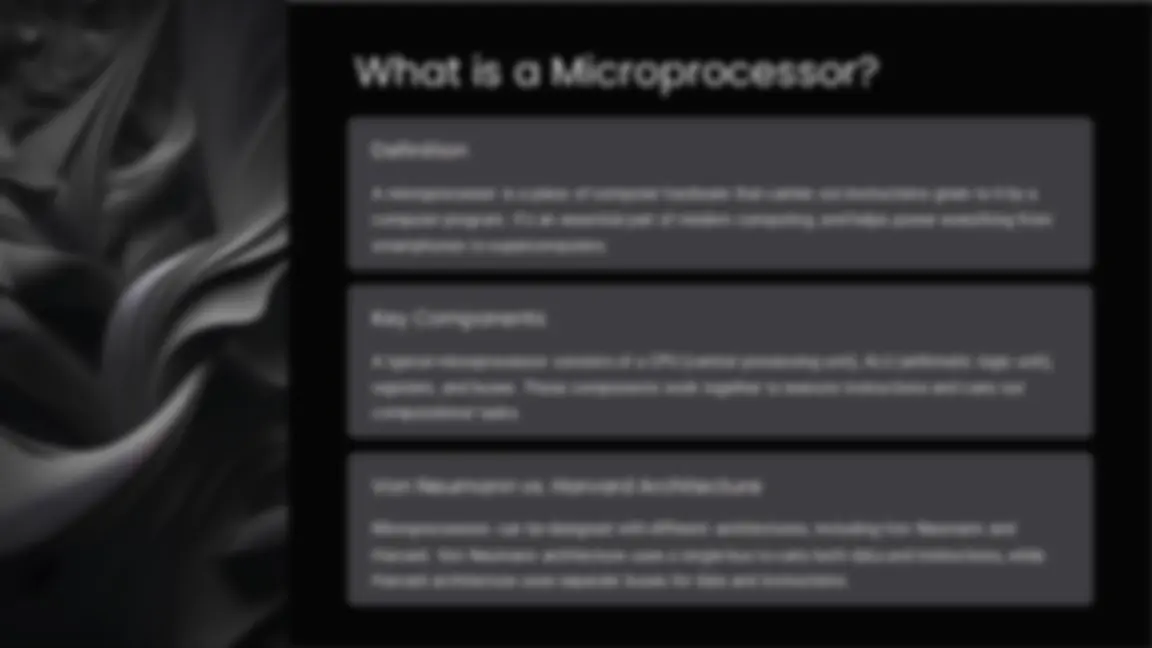
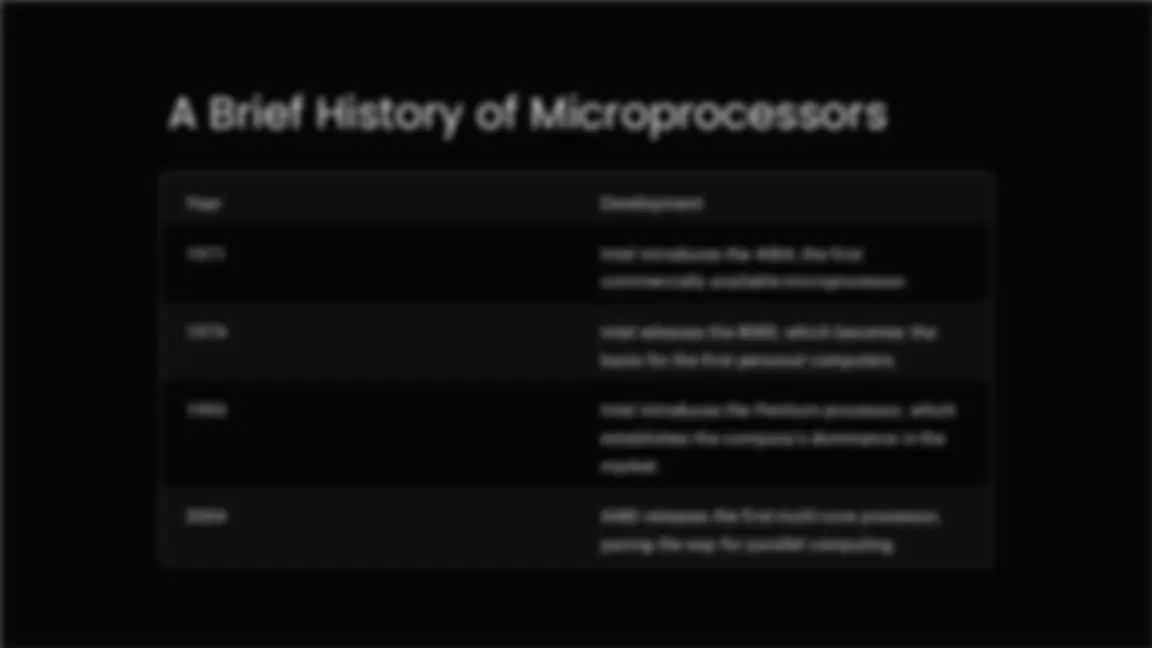

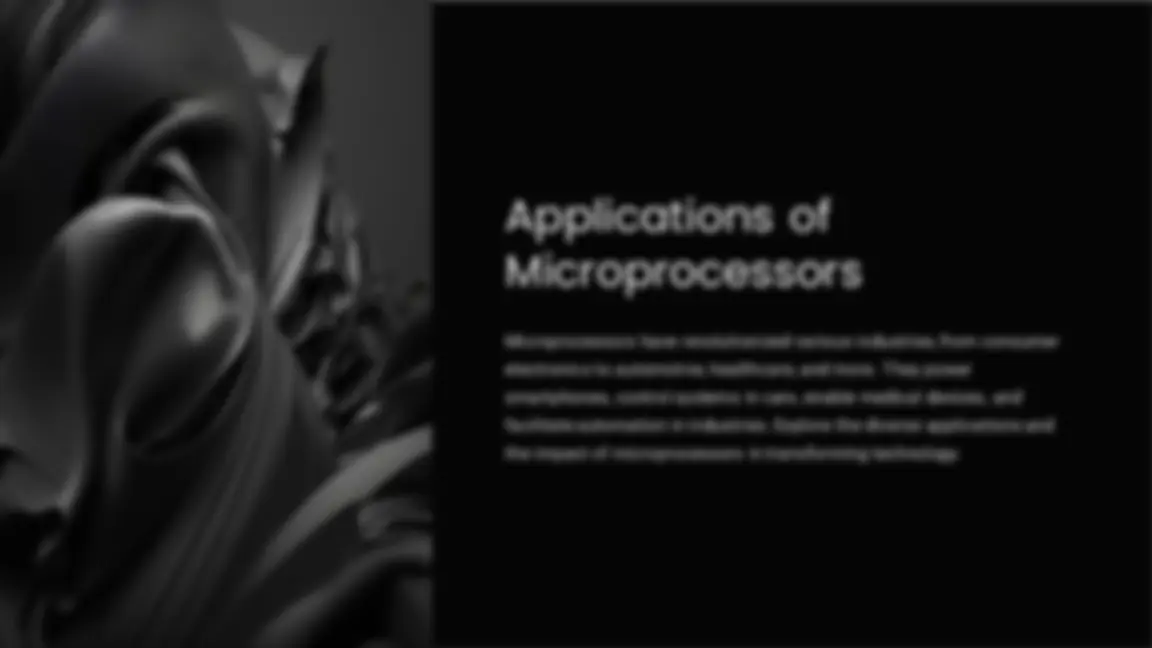
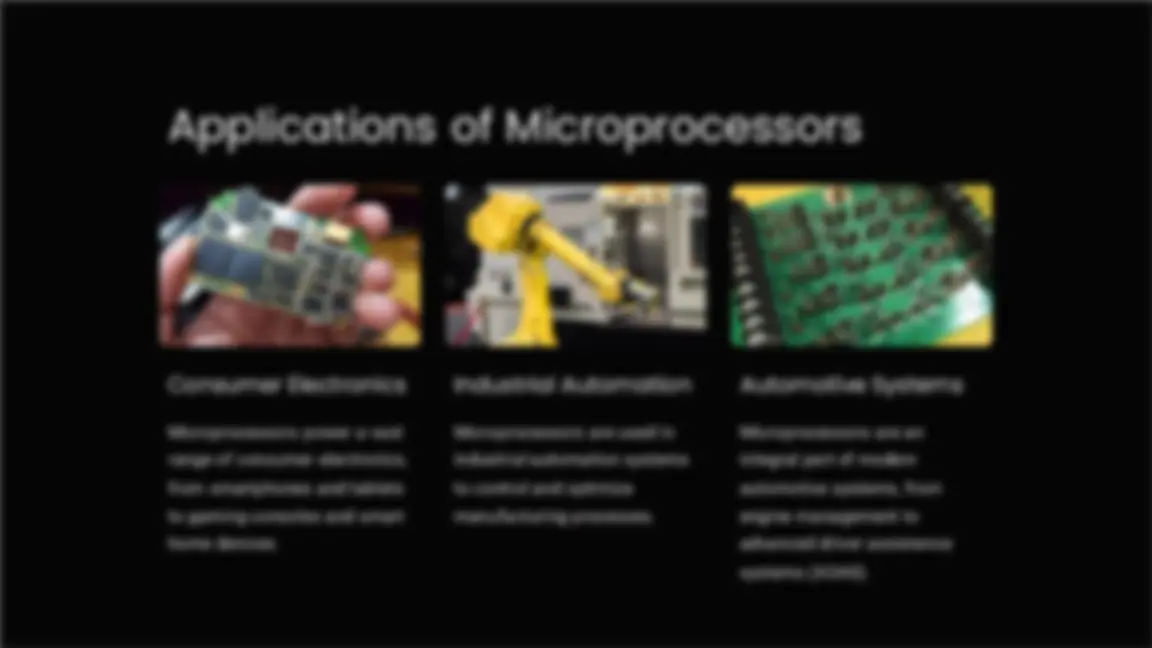
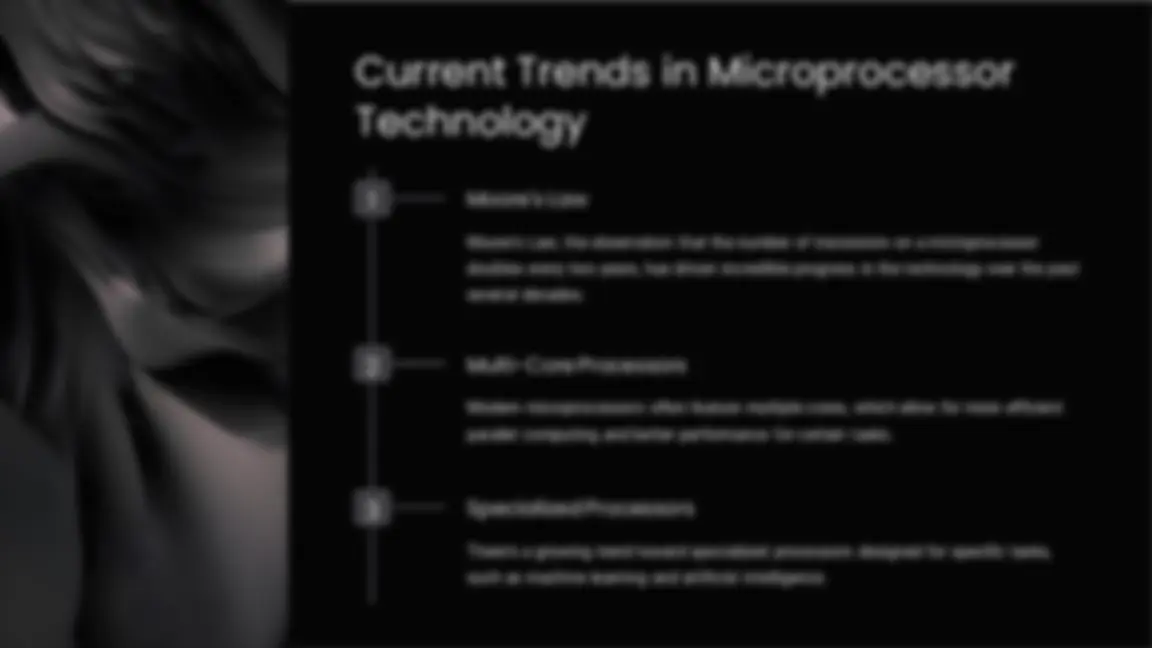
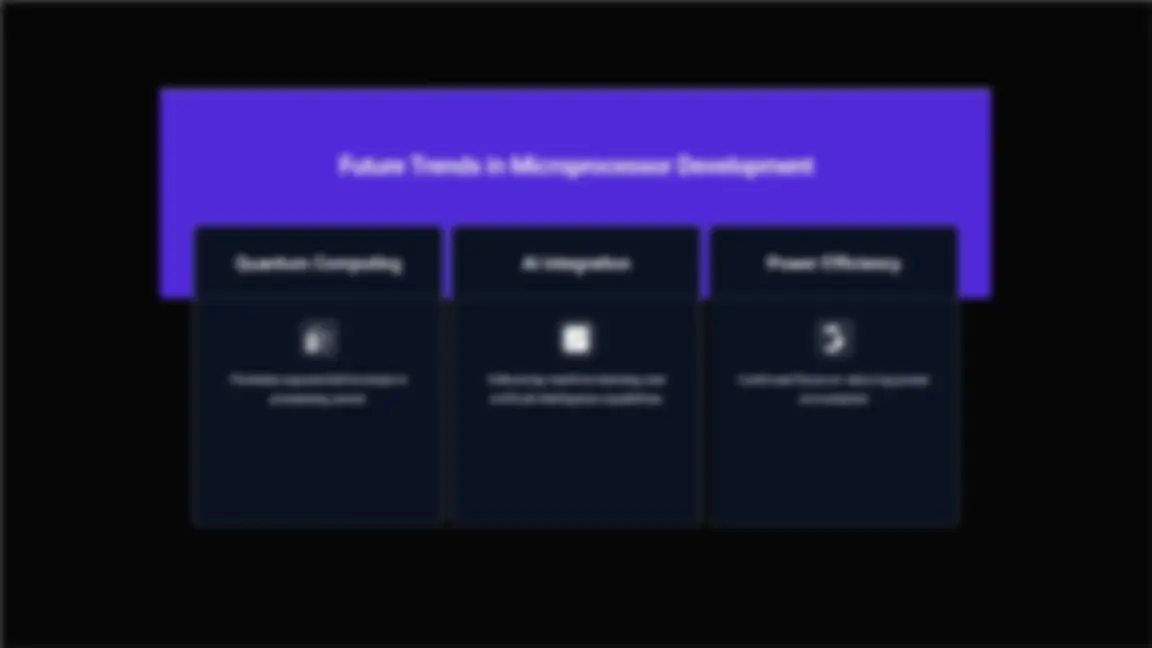
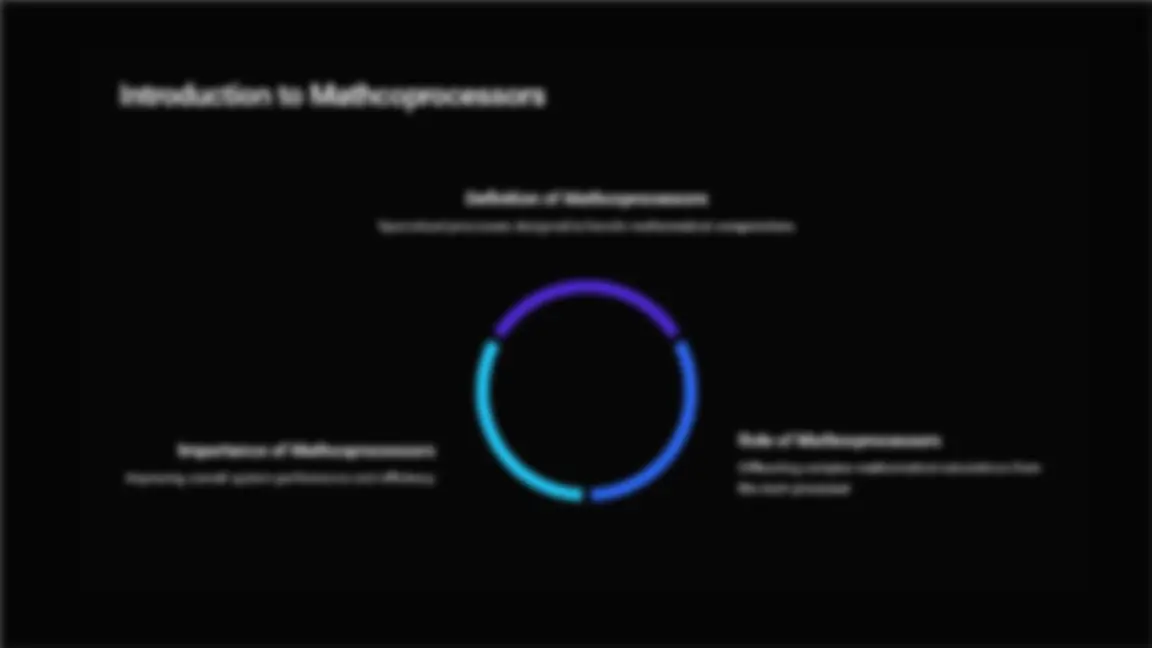
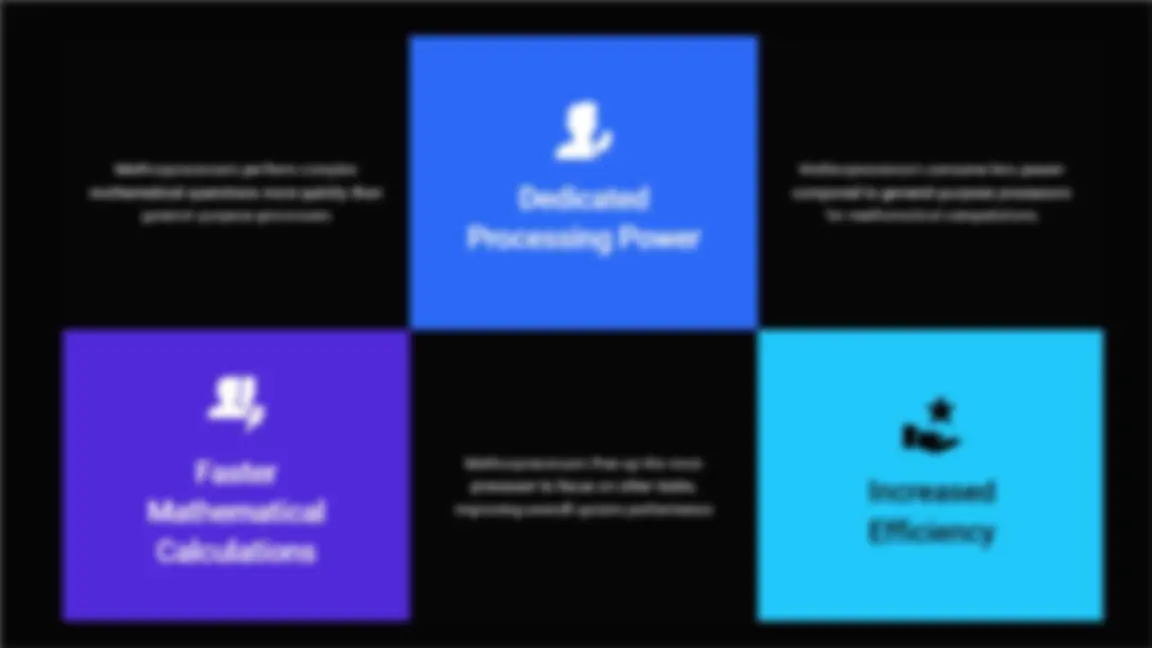
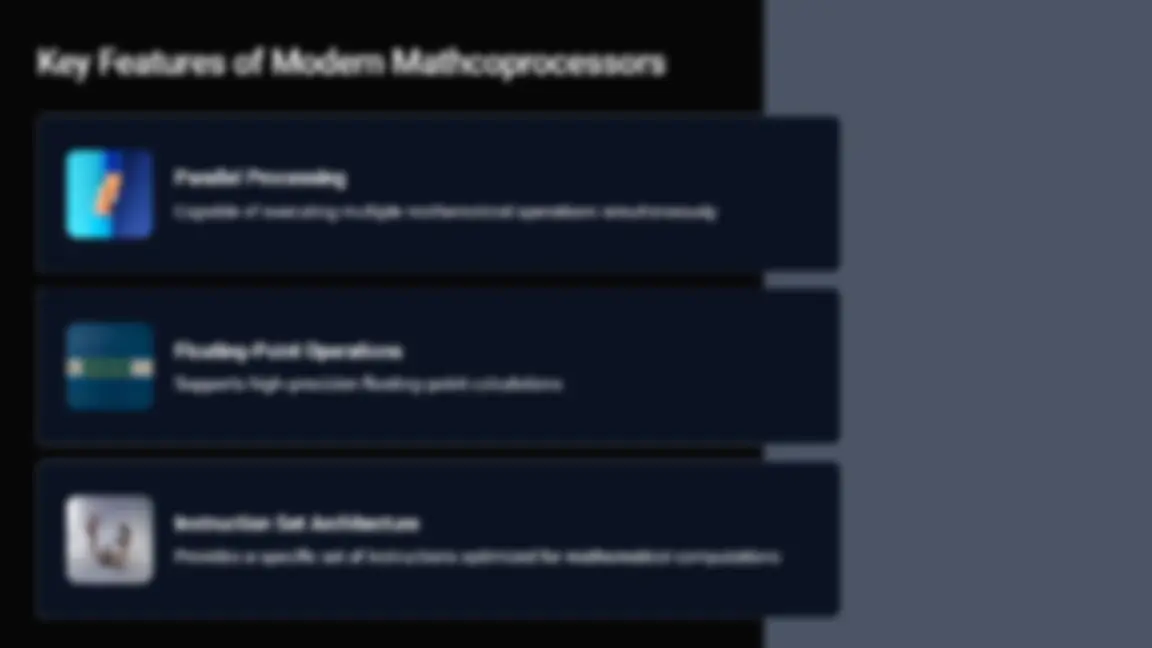
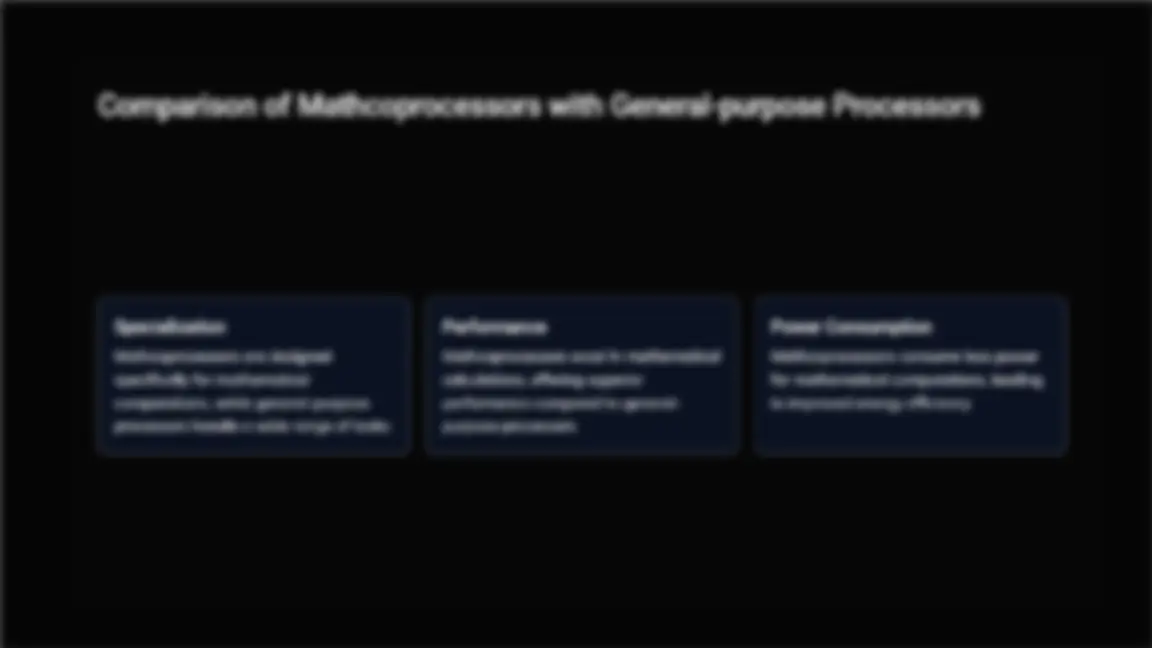
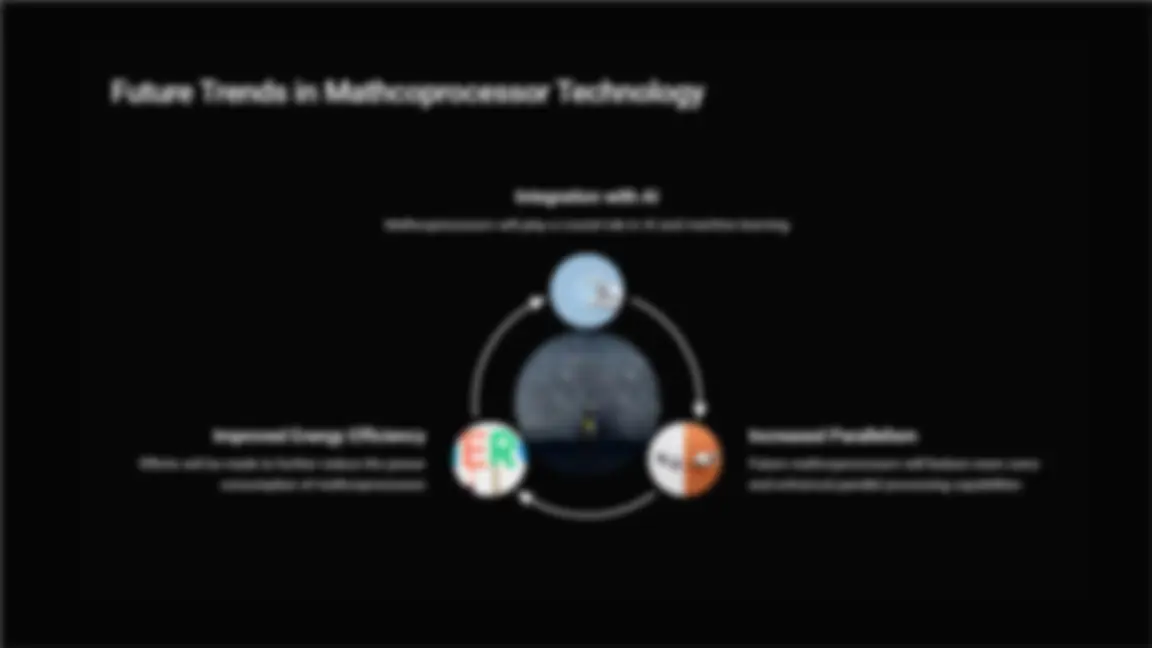



Study with the several resources on Docsity

Earn points by helping other students or get them with a premium plan


Prepare for your exams
Study with the several resources on Docsity

Earn points to download
Earn points by helping other students or get them with a premium plan
Community
Ask the community for help and clear up your study doubts
Discover the best universities in your country according to Docsity users
Free resources
Download our free guides on studying techniques, anxiety management strategies, and thesis advice from Docsity tutors
A comprehensive overview of microprocessors, a fundamental component of modern computing. It delves into the key components of a microprocessor, the difference between von neumann and harvard architectures, and the evolution of microprocessors over the years. The document also explores various applications of microprocessors in industries such as consumer electronics, industrial automation, and automotive systems. It concludes by discussing current trends and future prospects in microprocessor technology.
Typology: Summaries
1 / 21

This page cannot be seen from the preview
Don't miss anything!














A microprocessor is a tiny computer component that carries out instructions given to it by a computer program. It is a digital device on a chip that can fetch instructions from memory, decode and execute them and give results. It takes a bunch of instructions in machine language and executes them, telling the processor what it has to do.
A Brief History of Microprocessors Year Development 1971 Intel introduces the 4004, the first commercially available microprocessor. 1974 Intel releases the 8080, which becomes the basis for the first personal computers. 1993 Intel introduces the Pentium processor, which establishes the company's dominance in the market. 2004 AMD releases the first multi-core processor, paving the way for parallel computing.
Generation of Microprocessors In the ever-evolving world of technology, microprocessors have gone through several generations, each bringing advancements in speed, power efficiency, and capabilities. From the early 8-bit processors to the current multi-core architectures, let's explore the fascinating journey of microprocessor evolution.
Applications of Microprocessors Microprocessors have revolutionized various industries, from consumer electronics to automotive, healthcare, and more. They power smartphones, control systems in cars, enable medical devices, and facilitate automation in industries. Explore the diverse applications and the impact of microprocessors in transforming technology.
1 Moore's Law Moore's Law, the observation that the number of transistors on a microprocessor doubles every two years, has driven incredible progress in the technology over the past several decades. 2 Multi-Core Processors Modern microprocessors often feature multiple cores, which allow for more efficient parallel computing and better performance for certain tasks. 3 Specialized Processors There's a growing trend toward specialized processors designed for specific tasks, such as machine learning and artificial intelligence.
Future prospects and challenges 1 AI and Machine Learning Microprocessors will play a key role in the development of advanced artificial intelligence and machine learning technologies. 2 Power Efficiency As microprocessors become more powerful, they also become more power-hungry. Finding ways to improve energy efficiency while maintaining performance will be a major challenge in the years ahead. 3 Heat Dissipation The increasing numbers of transistors packed into smaller and smaller spaces creates challenges in dissipating the heat generated by microprocessors. Innovative solutions will be needed to prevent overheating and maintain performance.